Basically, all steps are similar except the web interface is different. What you need to do is to configure your SRX cluster with a master-only ip on both nodes. The configuration should looks like this:
root@fw-m-t-1> show configuration ## Last commit: 2017-03-23 14:44:28 UTC by root version 12.1X46-D55.3; groups { node1 { system { host-name fw-m-t-2; backup-router 10.9.1.1; services { ssh { max-sessions-per-connection 32; } } syslog { file default-log-messages { any info; match "(requested 'commit' operation)|(requested 'commit synchronize' operation)|(copying configuration to juniper.save)|(commit complete)|ifAdminStatus|(FRU power)|(FRU removal)|(FRU insertion)|(link UP)|transitioned|Transferred|transfer-file|(license add)|(license delete)|(package -X update)|(package -X delete)|(FRU Online)|(FRU Offline)|(plugged in)|(unplugged)|GRES"; structured-data; } } } interfaces { fxp0 { unit 0 { family inet { address 10.9.1.14/24 { preferred; } address 10.9.1.15/24 { master-only; } } } } } } node0 { system { host-name fw-m-t-1; backup-router 10.9.1.1; services { ssh { max-sessions-per-connection 32; } } syslog { file default-log-messages { any info; match "(requested 'commit' operation)|(requested 'commit synchronize' operation)|(copying configuration to juniper.save)|(commit complete)|ifAdminStatus|(FRU power)|(FRU removal)|(FRU insertion)|(link UP)|transitioned|Transferred|transfer-file|(license add)|(license delete)|(package -X update)|(package -X delete)|(FRU Online)|(FRU Offline)|(plugged in)|(unplugged)|GRES"; structured-data; } } } interfaces { fxp0 { unit 0 { family inet { address 10.9.1.13/24 { preferred; } address 10.9.1.15/24 { master-only; } } } } } } security; global-policy { security { policies { from-zone <*> to-zone <*> { policy default-logdrop { match { source-address any; destination-address any; application any; } then { deny; log { session-init; } } } } } } } }
In Juniper Space, you just need to import master-only ip into it. Here are steps with screenshots.
1. Device Discovery
 | |
|
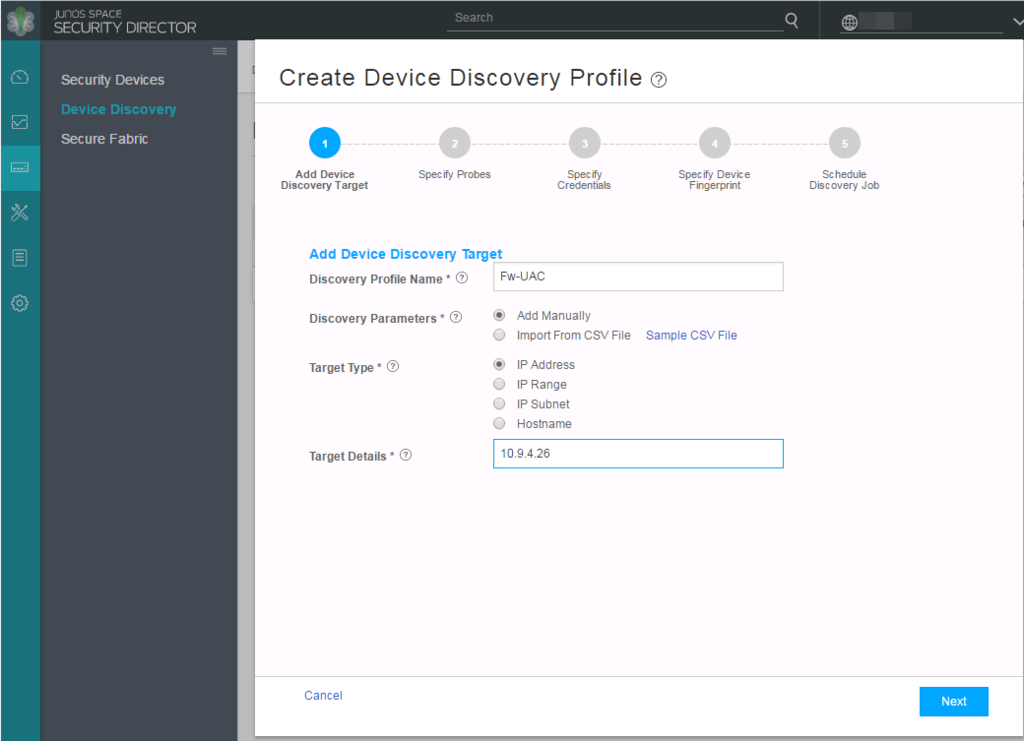 |
| Create Device Discovery Profile |
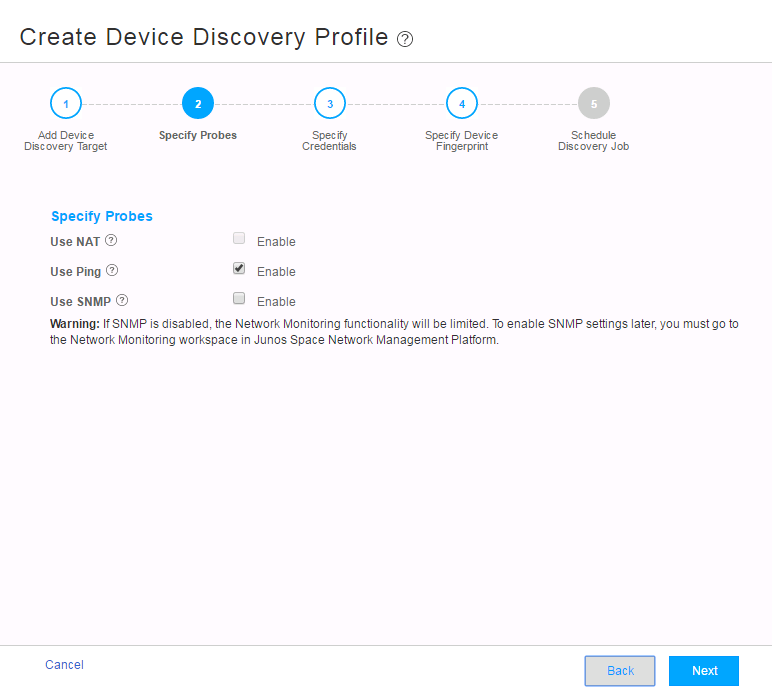 |
| Specify Probes |
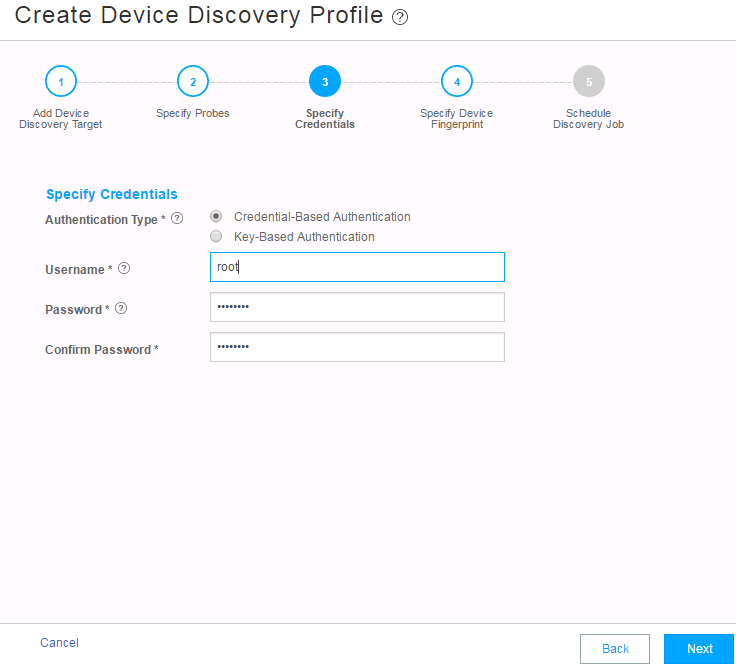 |
| Specify credentials |
 |
| Secify Device Fingerprint |
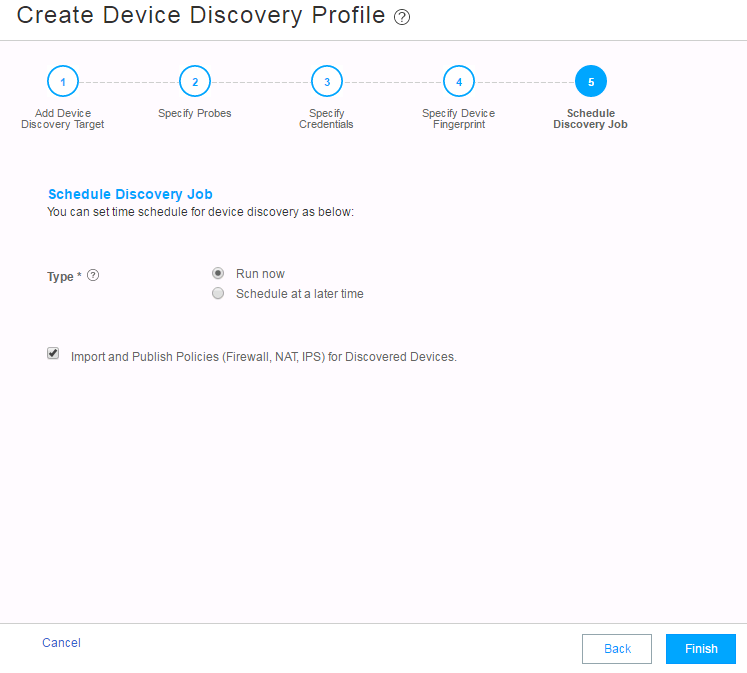 |
| Schedule Discovery Job |
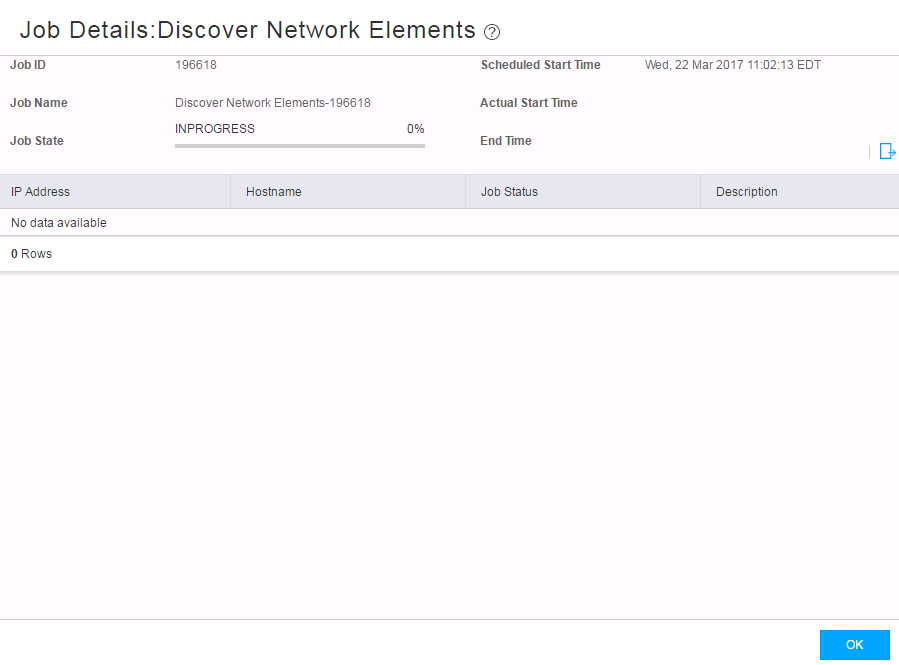 |
| Discovery Progress |
 |
| Discovered Device |
Note: If your Space Schema Version does not have your SRX OS version, it will shows mismatch on Schema Version column. In that case , you will need to do DMI Schema download the version you are missing.
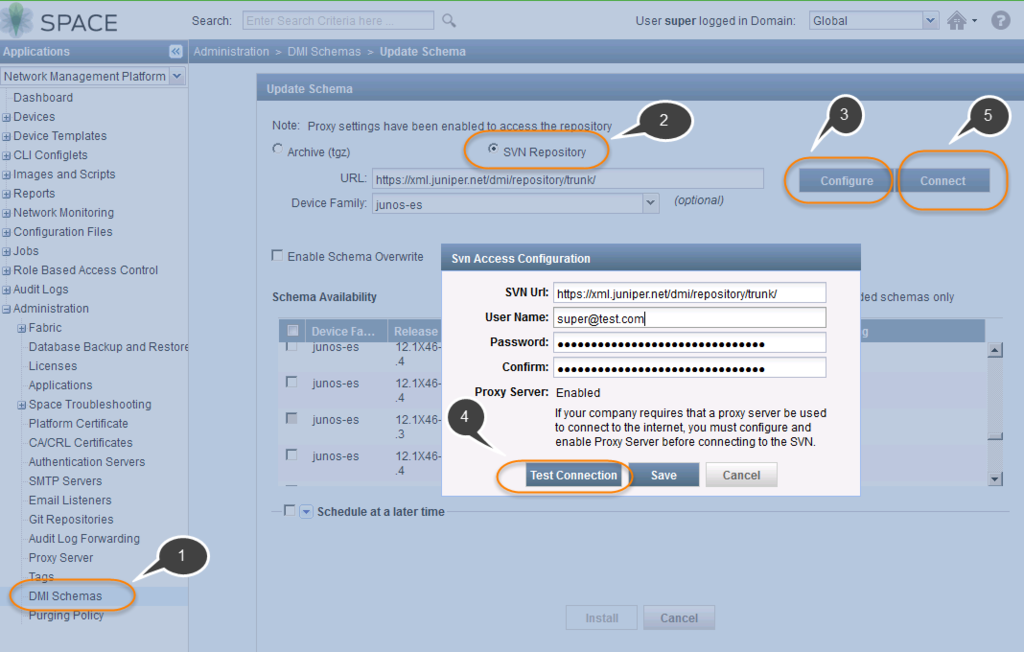 |
| DMS Download |
2. Import Device
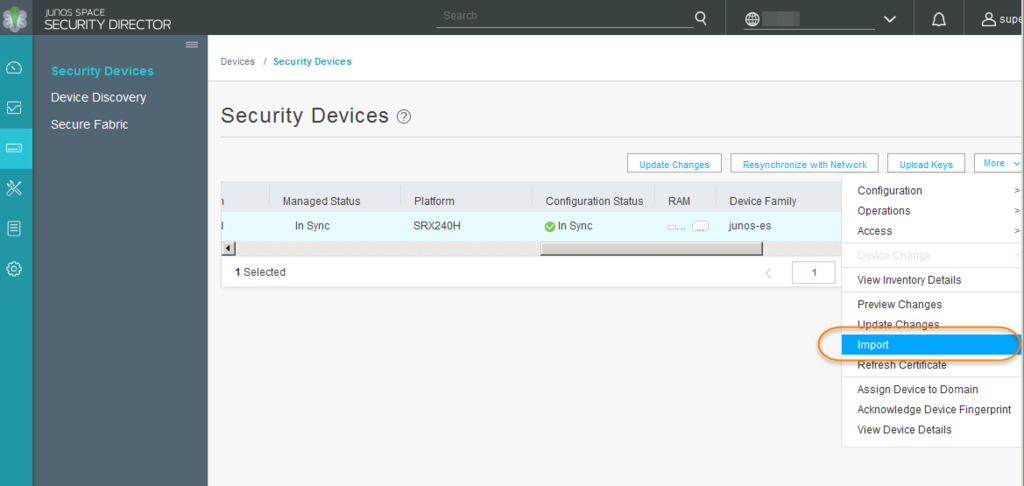 |
| Import Devices |
Follow the on-screen notes to complete steps, you will be able to import Firewall policy, NAT policy and IDP policy ,etc.
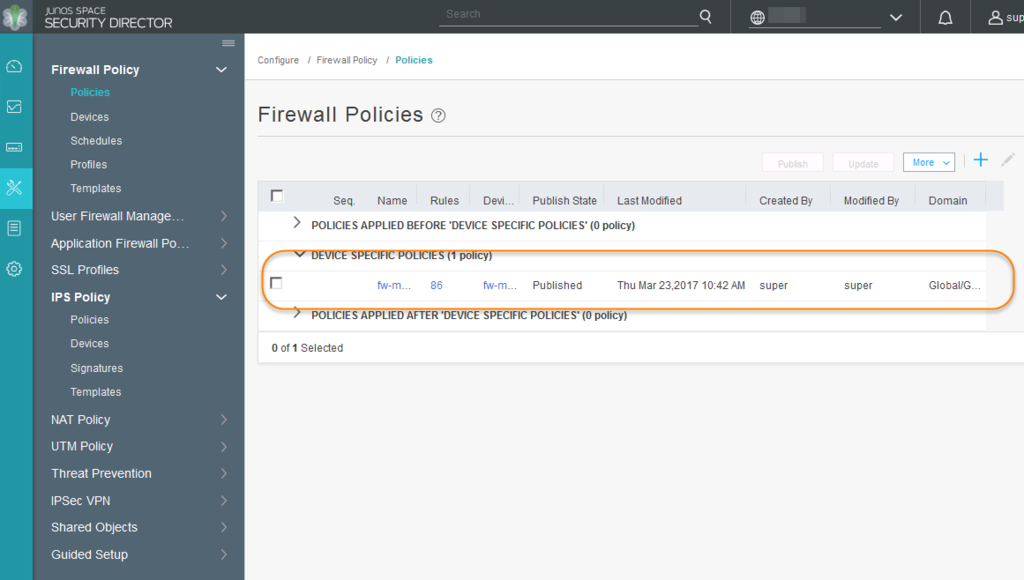 |
| Imported Firewall Policy |
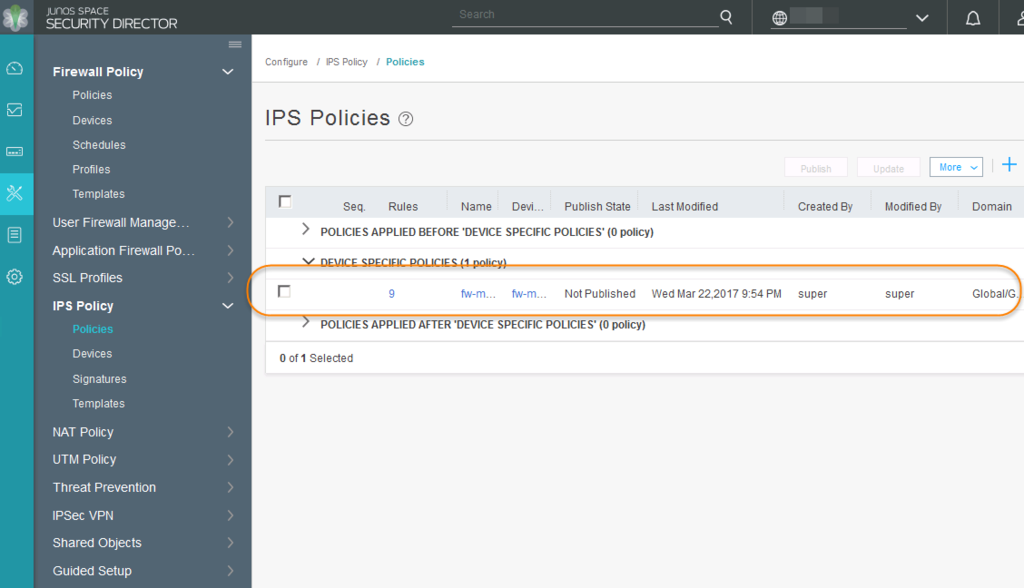 |
| Imported IPS Policy |
3. Publish and Update policy to your SRX devices
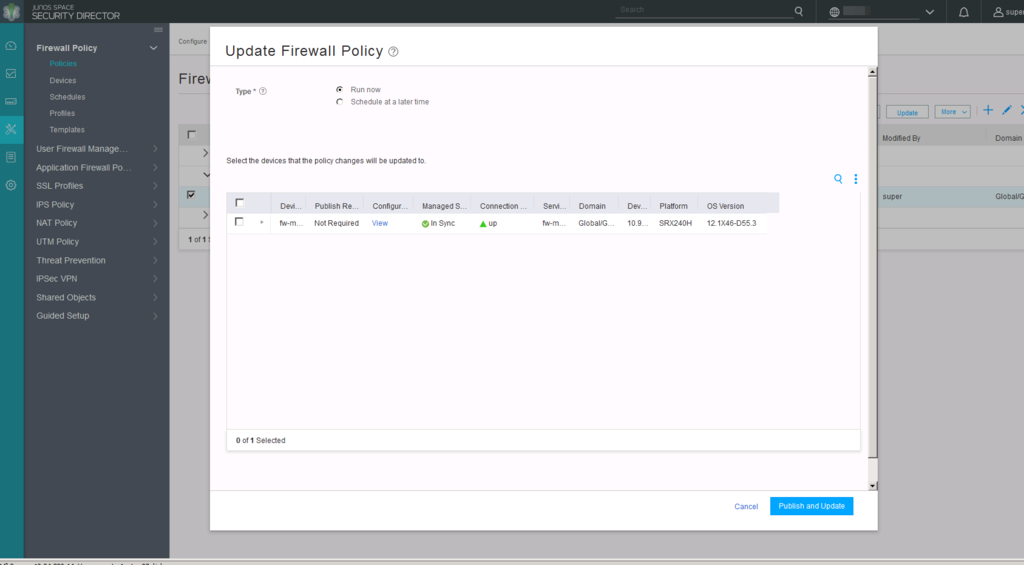 |
| Update Firewall Policy |
4. Troubleshooting
During updating policy, I met following two errors:
4.1. [Error] Configuration update failed.
Severity : error
Message : remote lock-configuration failed on node1
The fix is at KB27800 - [SRX] The error 'remote lock-configuration failed on node' is seen in SRX chassis cluster
- Go to node with the stuck lock.
- Execute the following commands:
>start shell
%mgd clr-chg
4.2. [Error] Configuration update failed.
Severity : error
At : [edit security idp idp-policy Space-IPS-Policy rulebase-ips rule Recommended-TCP/IP match]
Message : Please install the Signature Database
Details :
Severity : error
Message : configuration check-out failed
The fix is just to download latest signature database and install it to devices.
 |
| Download Latest Signature Database |
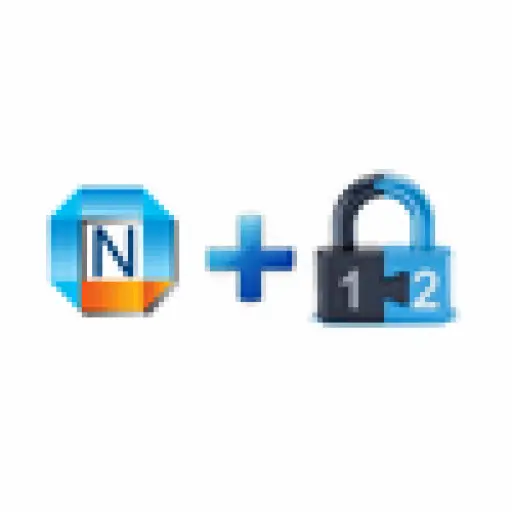





No comments:
Post a Comment